
Xian, China and the Terracotta Warriors cover page. |

Map of China with star indicating Xi'an. |
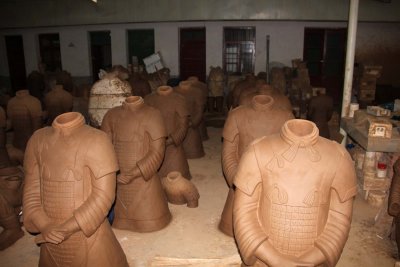
My first stop in Xi'an was at a factory that makes contemporary terracotta warriors. |
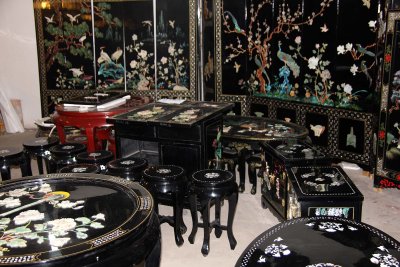
Adjacent to the terracotta warrior factory is a Chinese lacquer furniture factory. |
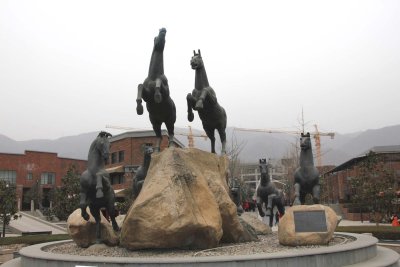
Bronze horse statues in the plaza outside the terracotta warriors exhibition halls. |
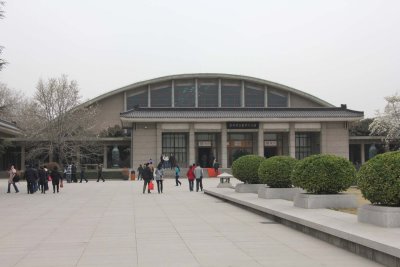
Terracotta warriors Pit No. 1. |
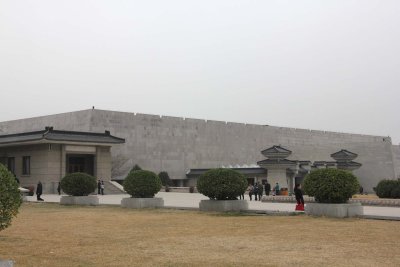
View of Pit No. 2. |
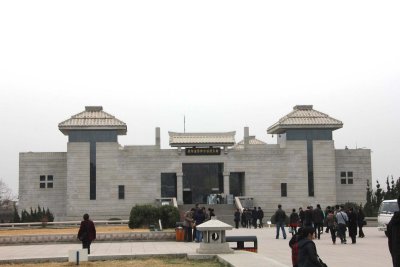
View of Pit No. 3. |

Some of the magnificent terracotta warriors in Pit No. 1. |
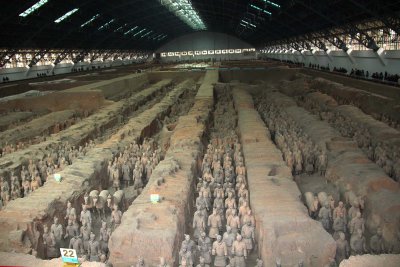
One can see the vastness of Pit No. 1, which measures 252 yards long, 68 yards wide and 16 feet deep. |
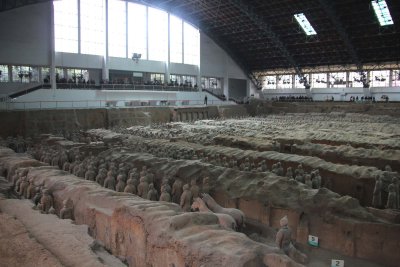
Pit No. 1 has good ventilation, daylight conditions and temperature and humidity monitoring systems to preserve the warriors. |
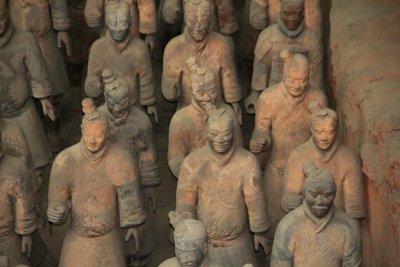
Close-up of the warriors. |
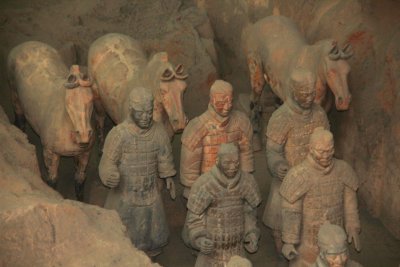
Originally, the warriors held bronze weapons such as crossbows, arrows, spears, knives, etc. |

There are over 6,000 terra cotta warriors and horses in Pit 1, of which 1,000 have been excavated. |
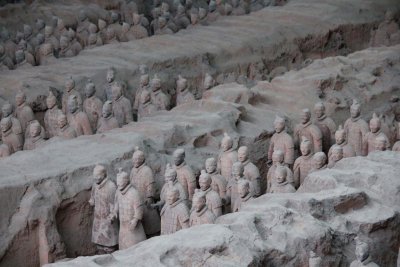
Every three yards, there is a puddle wall, which separates the underground army into different columns. |
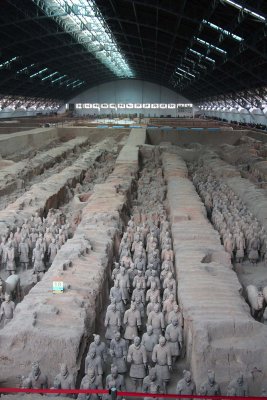
The walls were fortified with wooden columns, earth and vegetation while the floor was covered with black bricks. |

The puddle walls are lower than the terracotta warriors, because a flood in Pit 1 caused them to partially collapse. |
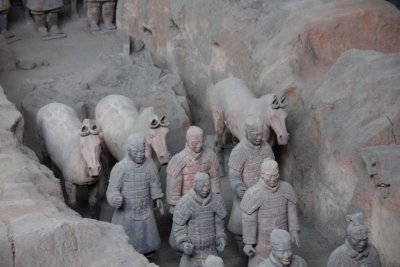
Behind the foot soldiers were chariots drawn by horses. |
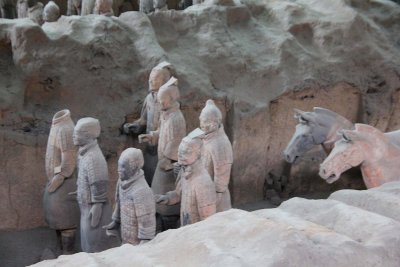
Horses behind the soldiers. The chariots did not survive because they were constructed mainly with wood. |
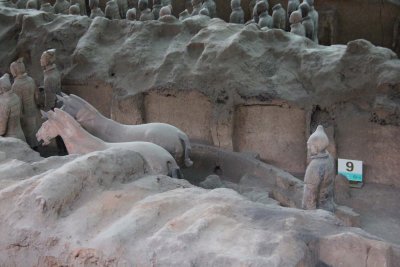
Horses and cavalry soldier minus the chariot. |
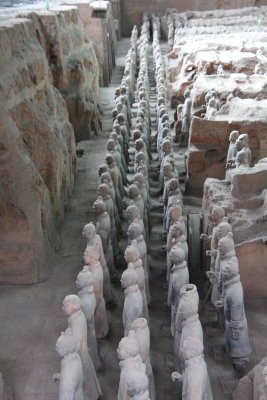
The foot soldiers are are lined into 38 columns. |

Some soldiers are clothed with battle robes, and some are equipped with armor. |

Close-up of the warriors in Pit No. 1. All of the faces are different. |
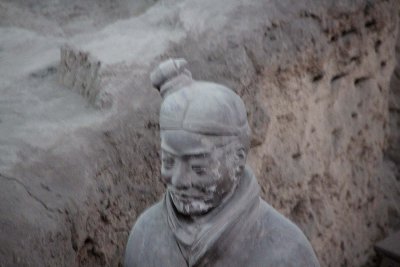
Head of a terracotta warrior infantryman. |
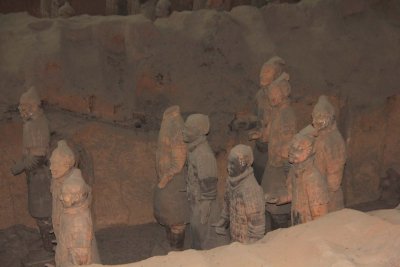
The soldiers are posed as though they are ready for battle at any moment. |
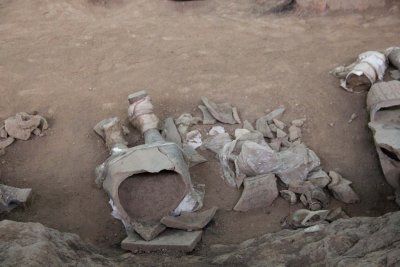
Ruins of the terracotta battle formation in Pit No. 1. |
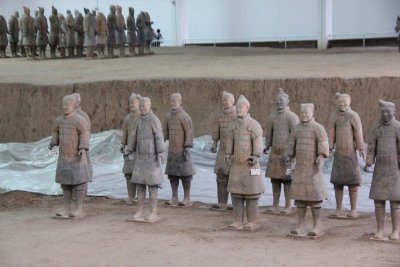
Formation of warriors at the rear of Pit No. 1. |

These warriors are very well preserved with the exception of a few missing heads. |
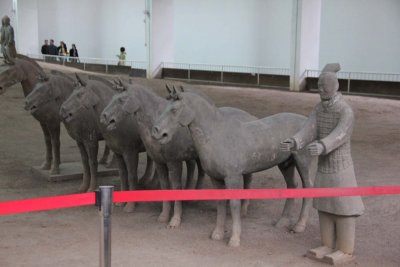
Well-preserved cavalry horses at the rear of Pit No. 1. |

After viewing Pit No. 1, I went to lunch where I witnessed this chef making Chinese noodles. |
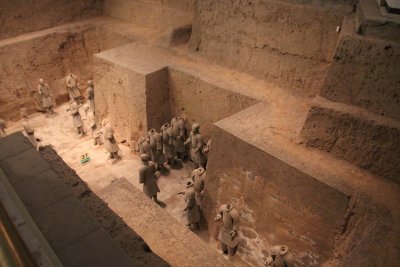
After lunch I went to Pit No. 2, the most spectacular of the three pits with the most complete and complex formations. |
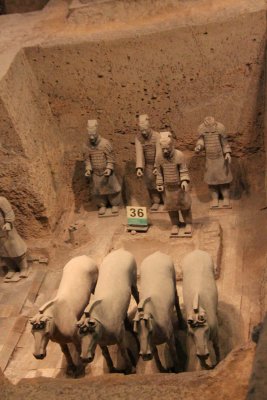
Cavalry and horses. In Pit No. 2, there are over 80 war chariots, 1,300 terra cotta warriors, horses and bronze weapons. |

More details of Pit No. 2. |
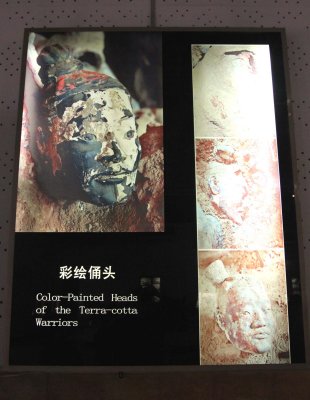
Poster on display at Pit No. 2. Originally, the terracotta warriors were painted to look life-like. The paint eroded with time. |
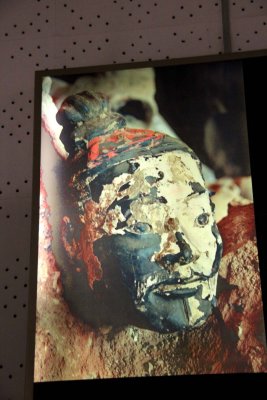
Close-up of a terracotta warrior's head. |

Another poster showing remnants and ruins of warriors in Pit No. 2. |
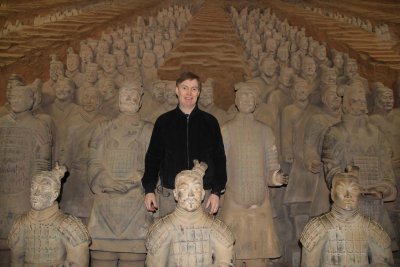
Me posing with the terracotta warriors. While they look real, these warriors are fake. |
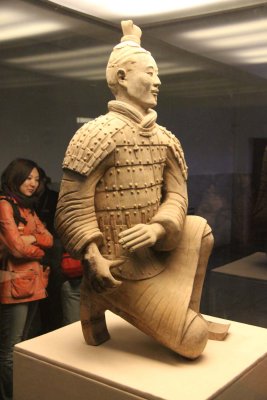
Display behind plexiglass at Pit No. 2 of a middle-ranking officer. |

Note the chest and back armor and the square-toed shoes. |
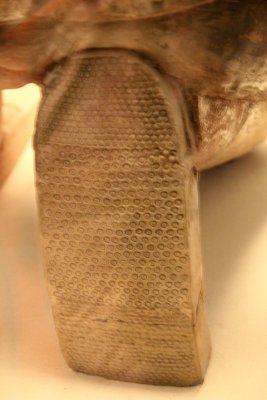
Close-up of the tread on the square-toed shoes. |
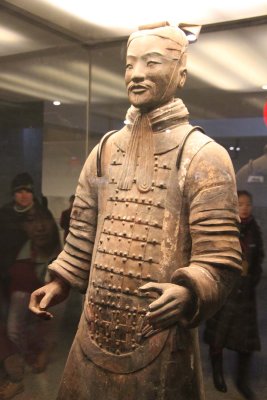
Display behind plexiglass at Pit No. 2 of a kneeling-archer. He held a cross-bow. |
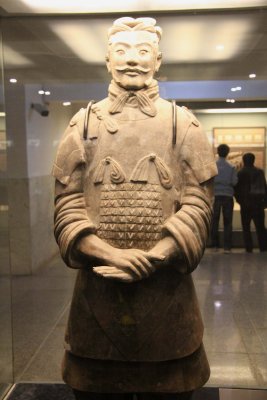
Display behind plexiglass at Pit No. 2 of a high-ranking officer. He is one of seven generals found in the terracotta pits. |

Display behind plexiglass at Pit No. 2 of a cavalryman with his saddled war-horse. |

He holds the reins in one hand and held a crossbow in the other. |

Display behind plexiglass at Pit No. 2 of a standing archer. His hands show that he was ready to shoot. |

Weapons on display at Pit No. 2. They utilize chrome plating technology (invented in China almost 200 years before Christ). |
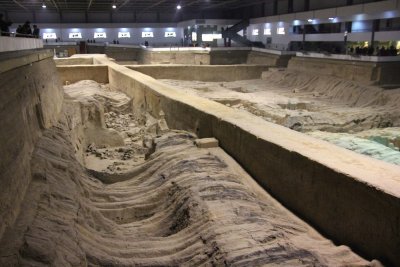
Ruins in Pit no. 3, which is actually a component of Pits No. 1 and 2 and the headquarters for the groups in the other two pits. |
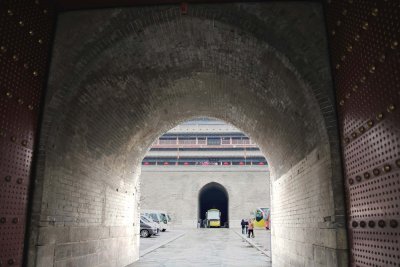
Tunnel leading to the Xi'an city wall, which is one of the oldest and best preserved city walls in China. |

Tour buses outside of the wall. It was built by Zhu Yuanzhang, the first Emperor of the Ming Dynasty (1368-1644). |
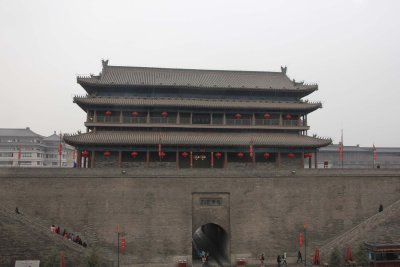
The wall has a moat and a circular park. It surrounds the inner city of Xian. |
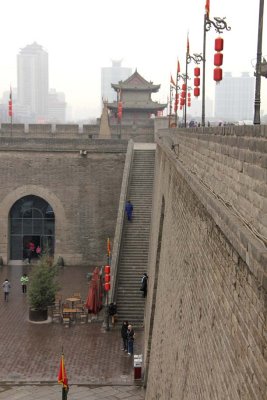
Steep stairs going up to the city wall. It's the most complete city wall in China. |

Construction of the first city wall began in 194 BC and lasted for four years. |

Another city wall view. It is one of the largest ancient military defensive systems in the world. |

Canons, catapults and other defensive weapons on top of the city wall. |
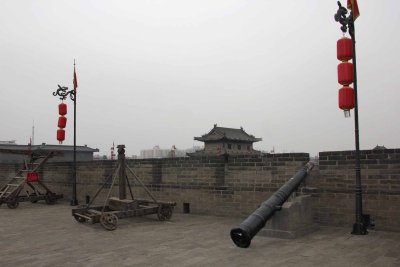
Close-up of the defensive weapons. |
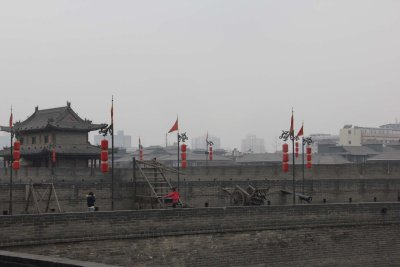
City wall view with defensive weapons and tower. |
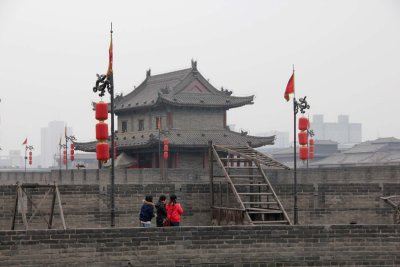
Tower view with flags and Chinese lanterns. |

The Chinese lanterns are hung from a metal dragon sculpture. |
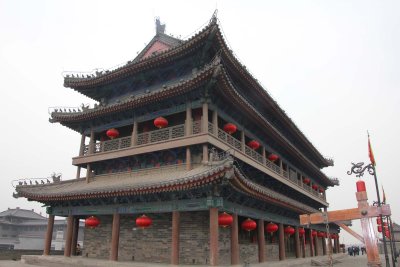
Close-up of the defensive tower. |

The wall is 13.7 kilometers (8.5 miles) long with a deep moat surrounding it. |
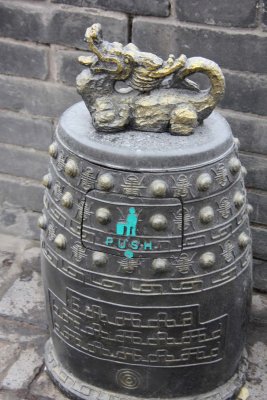
Unique dragon trash container on the Xi'an city wall. |
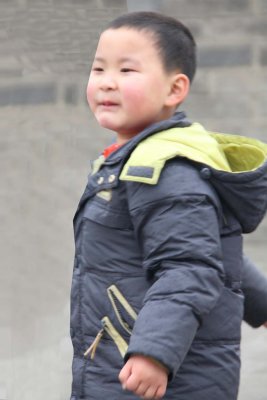
A chubby Chinese boy who was on the city wall that day. |
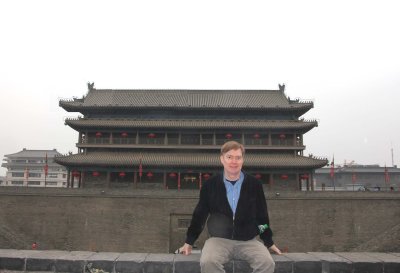
Me posing on the Xi'an city wall. |

A cute Chinese girl making bubbles in Xi'an. |
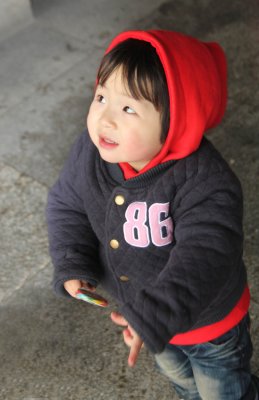
Another cute Chinese kid in Xi'an. |
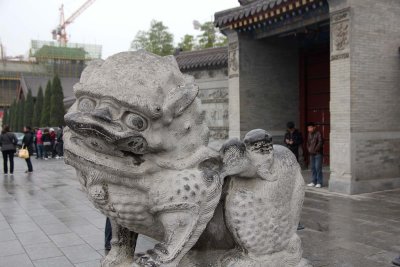
Female lion sculpture with a baby on her back. |
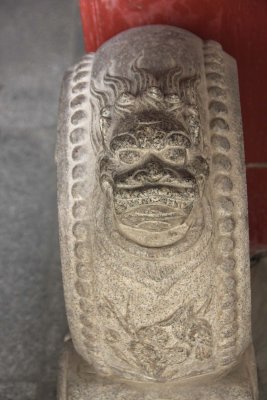
An unusual stone carving in Xi'an. |
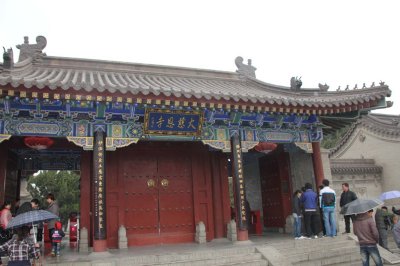
Chinese gate near Xi'an's Big Wild Goose Pagoda. |
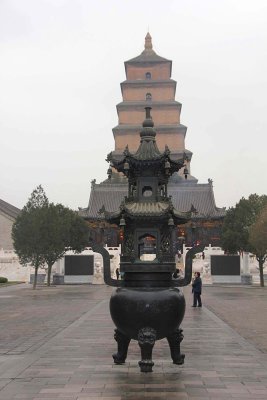
A large metal urn in front of the Wild Goose Pagoda in Xi'an. |
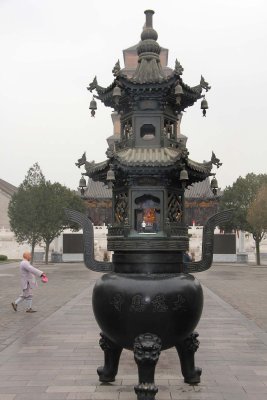
Close-up of the urn, which is probably used for religious ceremonies. |
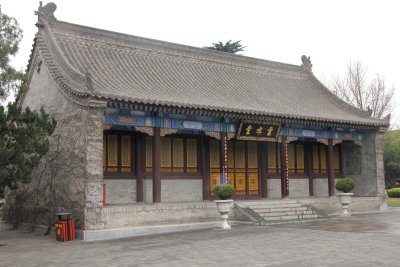
Structure with beautiful Chinese ornamentation near the Wild Goose Pagoda. |
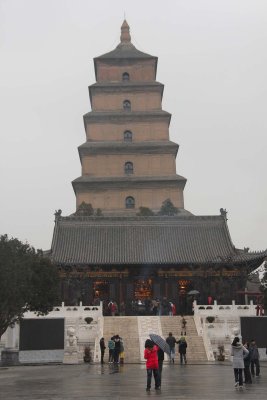
The Wild Goose Pagoda was built in 652 during the reign of Emperor Gaozong of the Tang Dynasty (618-907). |
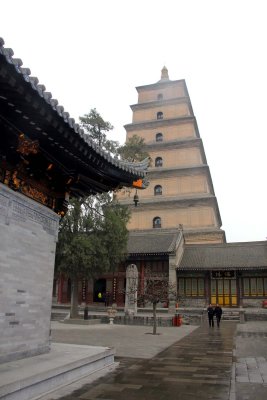
The pagoda's function was to collect Buddhist materials that were taken from India by the hierarch Xuanzang. |

Xi'an was part of the Silk Road, which lead to India, the cradle of Buddhism. |

Xuanzang traversed 100 countries for 17 years. |

Having acquired Buddha figures, 657 kinds of sutras and some Buddha relics, he supervised the building of the pagoda's interior. |
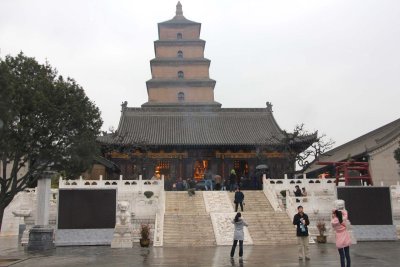
With the support of royalty, he asked 50 hierarchs to translate Sanskrit in sutras into Chinese, totaling 1,335 volumes. |
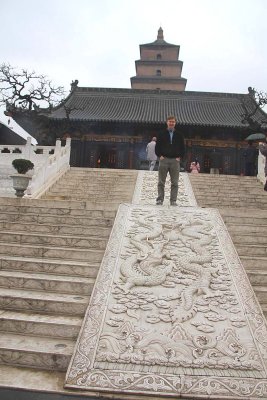
Me standing on the steps of the Wild Goose Pagoda. |
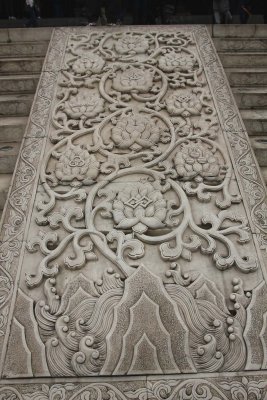
Beautiful design going up the stairs. |
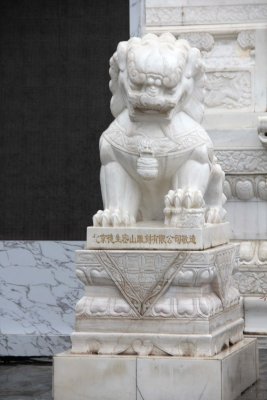
A lion sculpture was nearby. |
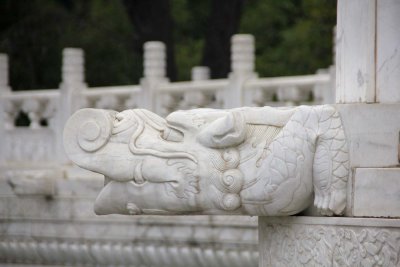
This wonderful stone dragon carving was also near the steps leading to the pagoda. |
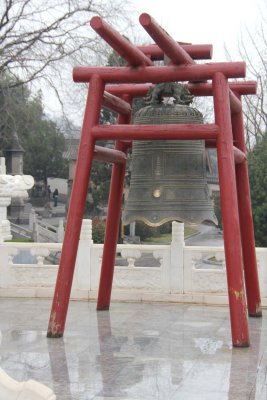
Beautiful bell at the Wild Goose Pagoda. |
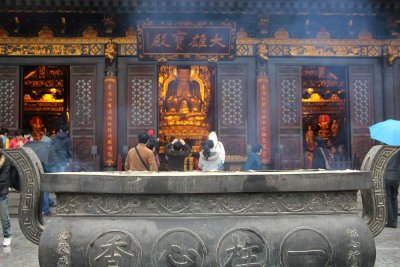
This incense-burning urn was nearby. |
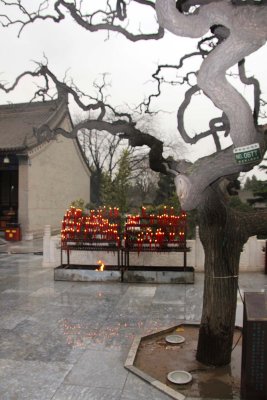
A twisted tree at the pagoda. |
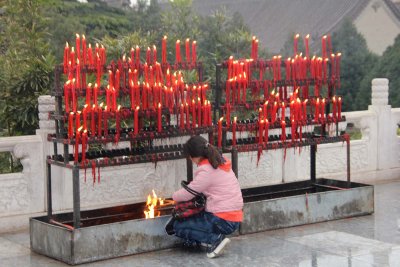
That's my tour guide, Jenna, making an offering with candles outside of the pagoda. |

Buddha image as seen from the outside looking in. |
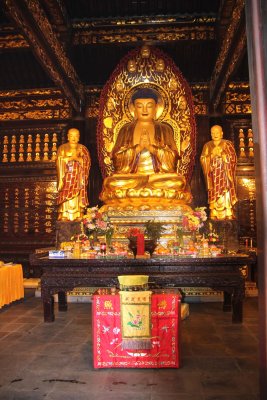
Exquisite golden Buddha statue and shrine inside the pagoda. |
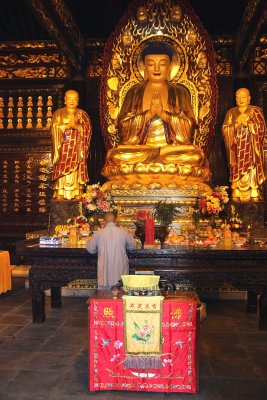
Monk praying in front of the shrine. |
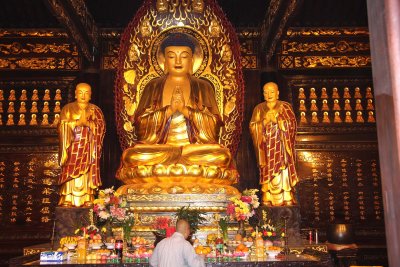
Close-up of the monk. |

Monks inside the pagoda. |
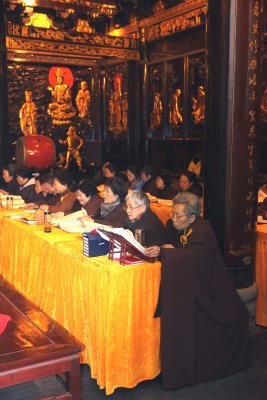
These Buddhists were having some kind of meeting or religious ceremony. |

Buddhist monks in orange robes worshipping. |
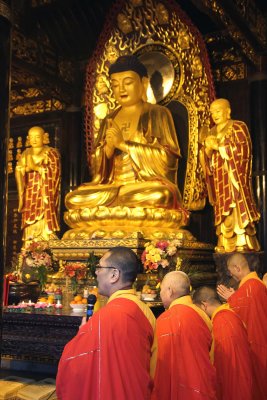
Close-up of the monks. |

More monks praying. |
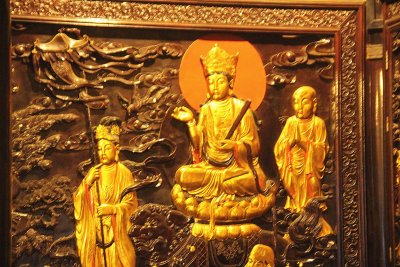
Exquisite golden carvings in the Wild Goose Pagoda. |
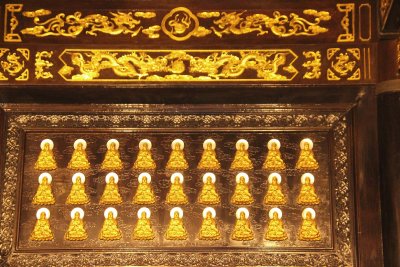
More decorative details in the pagoda. |

Buddhist monk peering out of the doorway of the pagoda. |

This monk was leaving. |

Two monks conferring with each other. |
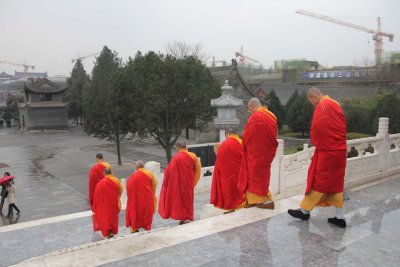
Procession of monks leaving the Wild Goose Pagoda in the rain. |
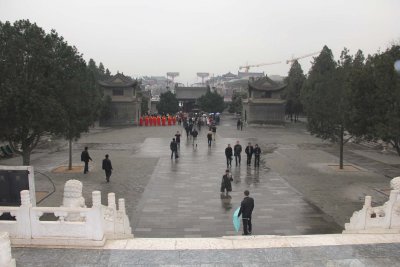
Monks converging in the square outside of the pagoda. |

Close-up of the monks converging. |
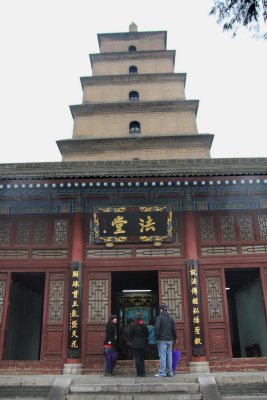
View of the Wild Goose Pagoda with a building in the foreground. |
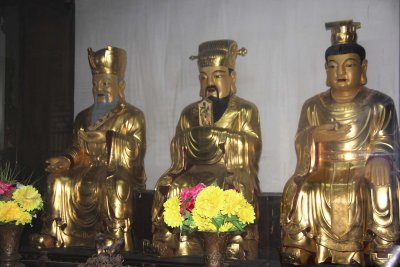
These golden Buddha statues inside the building. |
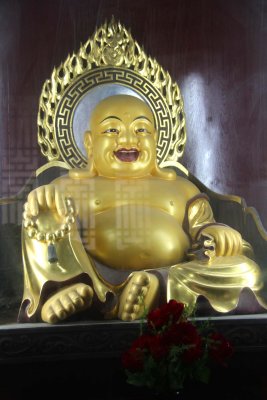
A magnificent "happy Buddha" was also on display, protected by plexiglass. |
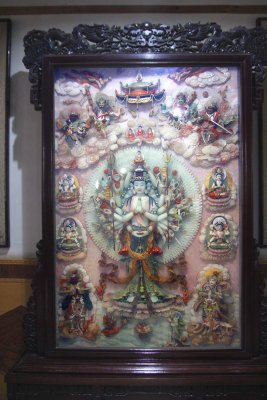
Exquisite Buddhist carving with jade and a hydra-armed Buddha. |
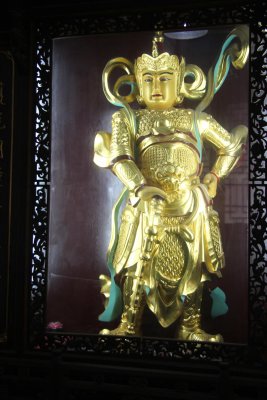
Another Buddhist statue on display. |
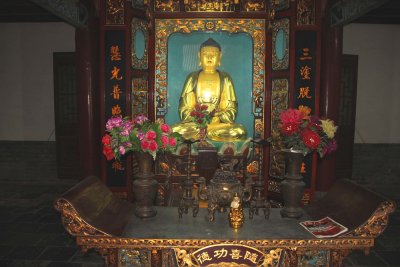
Golden Buddha with flowers in the foreground. |

Chinese structure with intricate gates. |
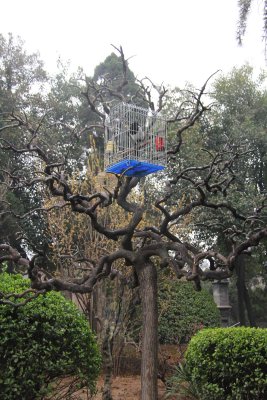
Nearby the Wild Goose Pagoda was a garden with this twisted tree with a bird cage hanging from it. |
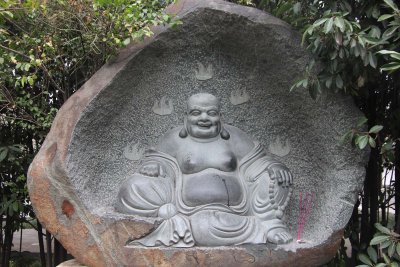
In the garden was the most famous "happy Buddha" in Xi'an. |
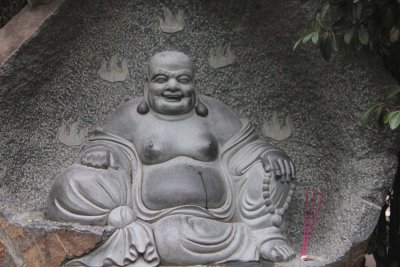
Close-up of the "happy Buddha." |
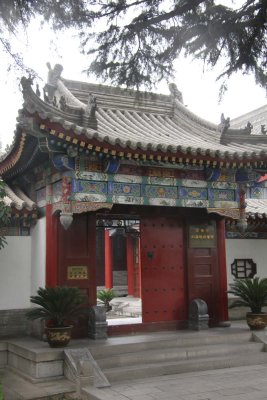
Near the Wild Goose Pagoda is this elaborately-decorated doorway. |

Colorful Buddhist tapestry and shrine in Xi'an. |
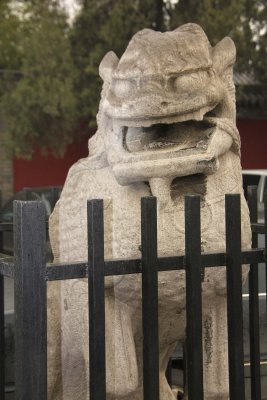
Xi'an lion sculpture. |

Close-up of the lion sculpture. |

Me standing in front of the statue of Xuanzang and the Wild Goose Pagoda in Xi'an. |











